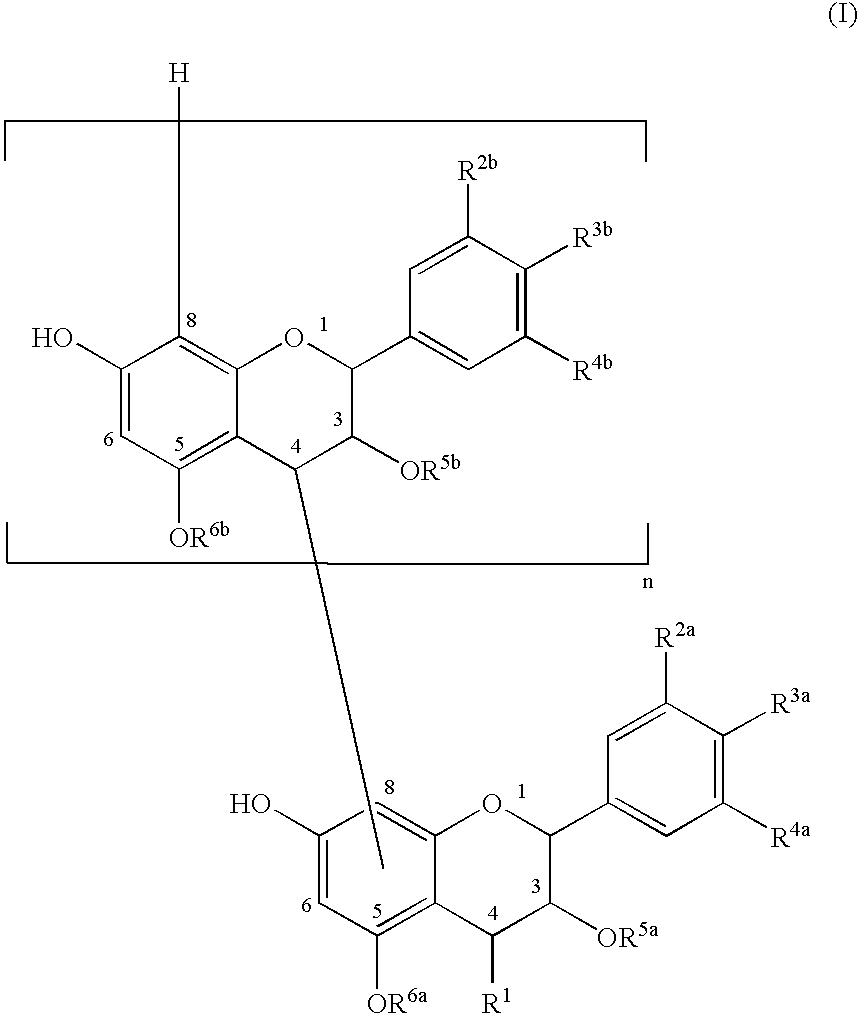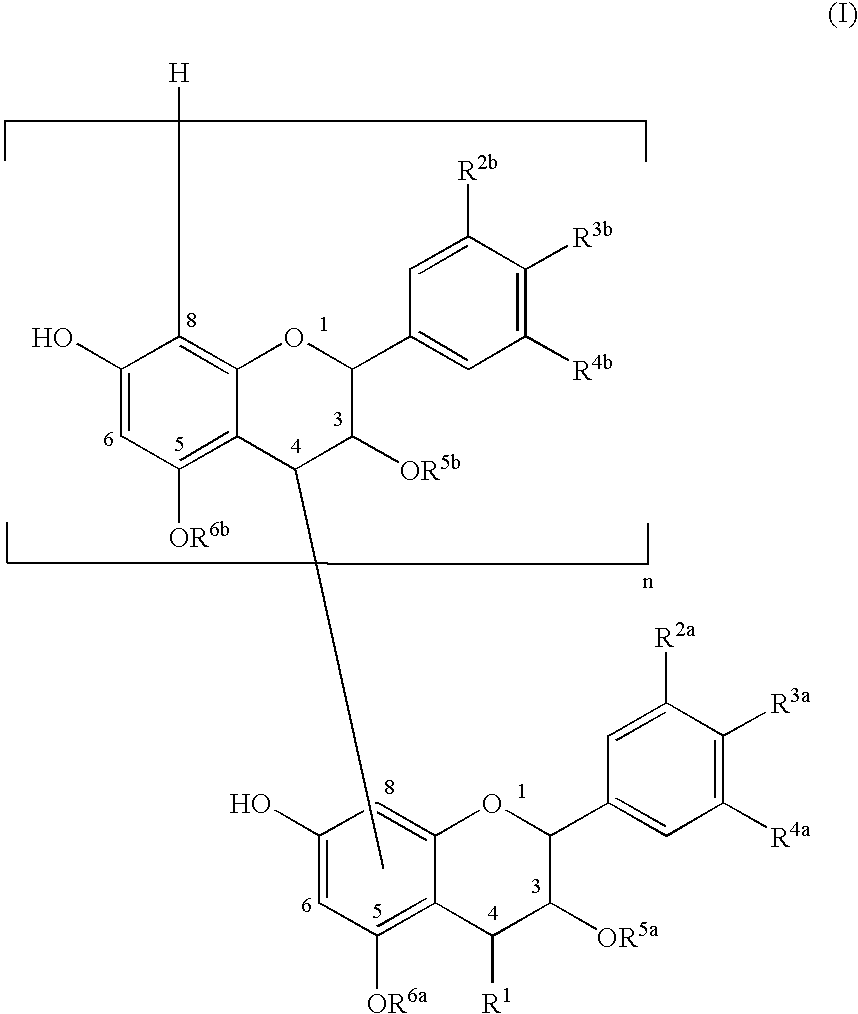Cigarette filter comprising grape proanthocyanidin
a technology of grape proanthocyanidin and cigarette filter, which is applied in the field of tobacco elements, can solve the problems of limiting the improvement of filtration efficiency within the range of a practical pressure drop, smoking does not obtain satisfaction, and it is difficult to eliminate or remove only a specific component in smoke components selectively
- Summary
- Abstract
- Description
- Claims
- Application Information
AI Technical Summary
Problems solved by technology
Method used
Image
Examples
example 1
[0094]A cellulose diacetate fiber bundle (tow) (total denier of 36,000) composed of 3.0 denier filaments having cross-sectional Y-configuration was opened to a width of about 25 cm by using a rod-making machine for tobacco smoke filter (manufactured by Hauni Mashinenbau AG, AF2 / KDF2), and on the tow was sprayed a proanthocyanidin derived from a grape pip in amount of 12% by weight of the proanthocyanidin relative to the cellulose acetate fiber, wherein the proanthocyanidin was produced by the method described in Japanese Patent Application Laid-Open No. 80148 / 1999 (JP-11-80148A) (purity: 95% by weight, manufactured by Kikkoman Co., trade name: Gravinol S). Then, the tow was provided to a rod making section of the machine said above, and made up at 400 m / minute with use of a wrapping paper. The obtained filter rod was cut to 120 mm in length. Furthermore, the filter rod was cut to 20 mm in length with use of a cutter to obtain a tobacco smoke filter sample. The properties of the obta...
example 2
[0095]To a cellulose diacetate fiber bundle (tow) (total denier of 36,000) composed of 3.0 denier filaments having cross-sectional Y-configuration was uniformly sprayed a solution obtained by dissolving 1 g of a proanthocyanidin (Gravinol S) in 300 ml of a mixed solvent of water and ethanol (water / ethanol=1 / 2 (volume ratio)), and air-dried for 24 hours. The resultant cellulose acetate fiber bundle (tow) was made to a filter rod of 120 mm in length by using a rod making machine for manufacturing tobacco smoke filter (AF2 / FR4). The content of the proanthocyanidin relative to the cellulose acetate fiber in the filter was 1.5% by weight. Furthermore, the filter rod was cut to 20 mm in length with use of a cutter to obtain a tobacco smoke filter sample. The properties of the obtained filter sample were determined by the above-mentioned methods. The results are shown in Table 1.
example 3
[0099]Each sample was prepared by connecting a leaf-tobacco component of a tobacco (manufactured by Japan Tobacco Inc., Co., trade name: Mild Seven) to each filter obtained from Example 1 and Comparative Example 1. Smoking sensory test was conducted by using the obtained samples. As a result, eight among ten panelists (panellers) estimated that the sample of Example 1 was preferable to that of Comparative Example 1 due to mildness of the taste. On the other hand, according to measurements of filtration rates of nicotine and tar, the ratio of eliminating (filtrating) rate of tar relative to that of nicotine increased by using the filter to which was added the proanthocyanidin. Such a increased ratio seems to be the reason for good estimation in the smoking sensory test.
PUM
 Login to View More
Login to View More Abstract
Description
Claims
Application Information
 Login to View More
Login to View More - R&D
- Intellectual Property
- Life Sciences
- Materials
- Tech Scout
- Unparalleled Data Quality
- Higher Quality Content
- 60% Fewer Hallucinations
Browse by: Latest US Patents, China's latest patents, Technical Efficacy Thesaurus, Application Domain, Technology Topic, Popular Technical Reports.
© 2025 PatSnap. All rights reserved.Legal|Privacy policy|Modern Slavery Act Transparency Statement|Sitemap|About US| Contact US: help@patsnap.com



